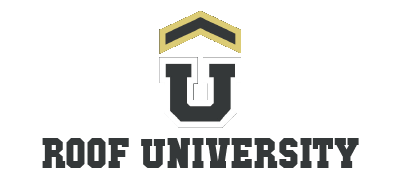Roof decking, or roof sheathing, is a vital structural component of a roofing system. It is the base layer between the roof’s framework and the external roofing material, providing stability, support, and a secure surface for underlayment, shingles, tiles, or panels. Properly installed and maintained roof decking ensures a long-lasting, durable, and weather-resistant roof.
What is Roof Decking?
Roof decking is a flat layer of material, typically made from wood or engineered wood products, installed over the roof’s framework (trusses or rafters). It provides structural integrity, distributes weight evenly, and is a foundation for roofing materials.
Types of Roof Decking
- Plywood Decking:
- Made from thin layers of wood veneer bonded together with adhesive.
- Advantages: Durable, resists warping, and provides excellent strength.
- Oriented Strand Board (OSB):
- Constructed from compressed wood strands and resin.
- Advantages: Cost-effective, lightweight, and widely used in modern construction.
- Wood Plank Decking:
- Composed of solid wood boards, often used in older or historic homes.
- Advantages: Durable and aesthetically appealing, especially in exposed applications.
- Tongue-and-Groove Decking:
- Features interlocking edges for a tighter fit and greater strength.
- Advantages: Eliminates gaps, reducing the risk of moisture infiltration.
- Metal Decking (Specialized Applications):
- Used in certain commercial or industrial applications for additional fire resistance or structural needs.
Features of Roof Decking
- Structural Support:
- Provides a secure base for roofing materials and evenly distributes weight across the roof frame.
- Weather Resistance:
- Acts as a barrier to protect the roof frame from moisture, wind, and other environmental factors.
- Versatility:
- Compatible with various roofing systems, including shingles, tiles, metal, and synthetic materials.
Benefits of Proper Roof Decking
- Enhanced Roof Strength:
- Ensures the roof can withstand heavy loads, such as snow, wind, and roofing materials.
- Longevity of the Roofing System:
- A stable and durable deck extends the lifespan of the roof by preventing structural issues.
- Weather Protection:
- Provides an extra layer of defense against moisture and wind infiltration.
- Compatibility with Roofing Materials:
- Serves as a foundation for a wide range of roofing options, allowing flexibility in design.
- Ease of Repair and Replacement:
- Damaged sections can be easily replaced without significant structural work.
Challenges of Roof Decking
- Moisture Vulnerability:
- Prolonged exposure to water can cause rot, swelling, or delamination, especially in wood-based decking.
- Installation Requirements:
- Requires precise installation to ensure proper weight distribution and support.
- Material Limitations:
- Some materials, like wood planks, may not meet modern building codes or insulation requirements.
Installation Process
- Inspect the Framework:
- Ensure trusses or rafters are level, evenly spaced, and structurally sound.
- Lay Decking Panels:
- Start at the eaves, placing decking panels perpendicular to the rafters or trusses.
- Secure the Decking:
- Nail or screw panels into place, maintaining proper spacing for expansion and contraction.
- Leave Gaps for Ventilation:
- Allow small gaps between panels to prevent buckling due to temperature changes.
- Seal and Prepare for Roofing Materials:
- Apply a waterproof underlayment to protect the decking before installing shingles or other roofing materials.
Maintenance Tips for Roof Decking
- Inspect Regularly:
- Check for signs of rot, warping, or moisture damage, particularly after storms or heavy rain.
- Maintain Proper Ventilation:
- Ensure adequate attic ventilation to reduce condensation and extend the life of the decking.
- Address Leaks Promptly:
- Repair leaks and replace damaged sections immediately to prevent further issues.
- Reinforce Aging Decking:
- Replace weakened areas during re-roofing projects to ensure a solid foundation.
Applications of Roof Decking
- Residential Roofing:
- Used in homes as the base for shingles, tiles, or metal roofing systems.
- Commercial Roofing:
- Provides a strong foundation for flat or low-slope roofs in office buildings and warehouses.
- Historic Renovations:
- Wood planks or tongue-and-groove decking are often used to preserve the architectural integrity of historic properties.
- Eco-Friendly Construction:
- Plywood and OSB are made from sustainable materials to support green building initiatives.
Why Choose Quality Roof Decking?
Quality roof decking is essential for a safe, durable, and efficient roofing system. It ensures proper weight distribution, enhances weather resistance, and provides a solid base for roofing materials. Investing in reliable decking materials can prevent costly repairs and extend the roof’s lifespan, whether for new construction or reroofing projects.
Conclusion
Roof decking is the backbone of any roofing system, offering strength, stability, and protection against the elements. By choosing the right materials and ensuring proper installation and maintenance, homeowners and builders can create a dependable, long-lasting roof that meets functional and aesthetic needs.
